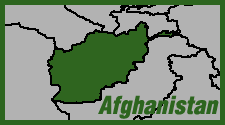 In a "worrying reversal" for global anti-drug efforts, the latest annual report from the United Nations Office for Drug and Crime (UNODC) finds that opium cultivation in Afghanistan increased 43% over the past year—with a total estimated yeild of 4,800 tons compared to 3,300 tons in 2015, The area under poppy cultivation increased 10% according to the report—clocking in at 201,000 hectares (496,681 acres), up from 183,000 hectares (452,200 acres). Simultaneously, there was a 91% decrease in eradication across the country—with no eradication reported at all in the top producing provinces. "It is very disturbing to see a considerable increase in poppy cultivation in the north which may be linked with a deteriorating security situation in the region," said Andrey Avetisyan, UNODC's chief in Afghanistan, at an Oct. 23 Kabul press conference.
In a "worrying reversal" for global anti-drug efforts, the latest annual report from the United Nations Office for Drug and Crime (UNODC) finds that opium cultivation in Afghanistan increased 43% over the past year—with a total estimated yeild of 4,800 tons compared to 3,300 tons in 2015, The area under poppy cultivation increased 10% according to the report—clocking in at 201,000 hectares (496,681 acres), up from 183,000 hectares (452,200 acres). Simultaneously, there was a 91% decrease in eradication across the country—with no eradication reported at all in the top producing provinces. "It is very disturbing to see a considerable increase in poppy cultivation in the north which may be linked with a deteriorating security situation in the region," said Andrey Avetisyan, UNODC's chief in Afghanistan, at an Oct. 23 Kabul press conference.
The report finds that there was one less poppy-free province this year—Jawzjan in the north. This brings the total number of poppy-free provinces down to 13 of the country's 34 provinces. Helmand in the south remained the top poppy cultivating province, accounting for half the national yeild. It was followed by Badghis, Kandahar, Uruzgan, Nangarhar and Farah. All these provinces are now facing active, often growing insurgencies.
The Taliban have now taken over nearly all of Helmand. And if Helmand were a country, it would be the one with the world's highest opium production. So control of this province means more opium proceeds to fuel their insurgency elsewhere in the country. The Taliban now control territory populated by about 10% of the Afghan population—some 3 million people. The Afghan government controls only two-thirds of the populace. The remainder—about 6 million—are in areas where the Taliban and government are contending for control, with neither having a firm hand.
ISIS has meanwhile raised its black flags in areas of eastern Afghanistan, declaring itself "Islamic State Khorasan" (an ancient name for Afghanistan). ISIS seeks to seize Jalalabad, capital of opium-producing Nangarhar province, as the capital its "Khorasan Province," US commander in Afghanistan Gen. John Nicholson told CNN. Nicholson boasted that Afghan commandos backed by US Special Forces recently attacked ISIS strongholds in Nangarhar, killing 15% of their fighters. About 1,000 ISIS fighters today remain on the battlefield in Afghanistan, according to the Pentagon.
Optimistic statements from US generals in Afghanistan should be taken with a grain of salt. ISIS has actually lured fighters away from the Taliban by burning opium-fields and portraying their jihadist rivals as corrupted by drugs. But with opium profits the ticket to military and political power, it is not surprising that Afghanistan's booming opium zones are also its bloodiest war-zones.
Cross-post to High Times







Recent comments
2 weeks 6 days ago
3 weeks 6 days ago
4 weeks 2 hours ago
5 weeks 2 days ago
10 weeks 3 days ago
12 weeks 6 days ago
18 weeks 2 hours ago
29 weeks 6 days ago
32 weeks 11 hours ago
33 weeks 11 hours ago